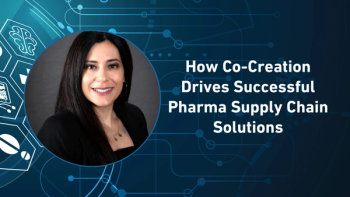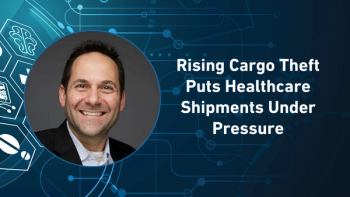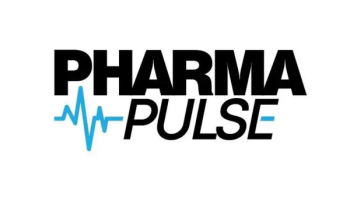Future Focal Points for Distributors
- Deepen specialty and MSO integration. Continue expanding into management service organizations and specialty care networks to strengthen relationships with independent practitioners, secure high-margin specialty drug channels, and create clinical trial and patient outcome data synergies with manufacturers.
- Advance cell and gene therapy readiness. Invest in cold-chain infrastructure, patient services, and integrated logistics platforms to position as a turnkey commercialization partner for emerging cell and gene therapies, differentiating from pure logistics competitors.
- Navigate policy and trade volatility proactively. Maintain flexible sourcing strategies, diversify API supply chains, and engage in active government relations to mitigate risks from shifting tariff policies, state-level drug importation programs, and potential federal drug pricing interventions.
It’s calm seas and smooth sailing, for the most part, in the US drug wholesaling world. The past controversy over improper distribution of controlled substances, leading to a national opioid-abuse crisis, has receded after a broad, 18-year, $26-billion settlement among wholesalers and most state attorneys general in 2022. Today, most headlines about the topic concern how states, municipalities, and local agencies are handling the funds being disbursed.
Similarly, drug wholesalers were caught up in the amorphous “greedy middlemen” controversy over the costs and inequities of drug dispensing in the US. For the most part, that ongoing controversy is putting a spotlight on pharmacy benefit managers (PBMs), and legislative and legal remedies are being sought.
The distribution landscape
Financially, the Big Three wholesalers—McKesson, Cencora, and Cardinal Health—are doing well, with revenues and operating incomes rising at near-double-digit rates last year and this year. The Healthcare Distribution Alliance (HDA), the trade association for US wholesalers, calculates that in excess of 95% of all prescription shipments are handled by wholesaler-distributors. The Drug Channels Institute, an HMP Global Company, which published an annual report, “The 2024-2025 Economic Report on Pharmaceutical Wholesalers and Specialty Distributors,” estimated that 2024 drug-distribution revenue of the Big Three was $776 billion in 2024.
Contract terms between wholesalers and the dominant drug dispensers—chain drugstores and PBMs—are closely watched items on Wall Street. Cardinal Health took a hit in 2023-24 when it lost its business with OptumRx, a leading PBM, representing 16% of Cardinal’s revenue. But by spring 2025, it was reporting near-identical revenue to the previous year. McKesson, which won the OptumRx business, took a hit of its own as Rite Aid, a leading drugstore chain, closed up shop.
“We had a very successful Business Leadership Conference (BLC) this year,” says Chip Davis, president of the HDA. “The mood among our healthcare distributor members is largely positive.” (BLC, held each June, brings HDA members together for networking.) However, it’s hard to overlook the turmoil brought on by the Trump administration’s gestures toward tariff impositions and efforts to lower drug prices across the board. “HDA has been communicating with the Trump administration, encouraging them to work collaboratively to advance the health and well-being of all Americans while also protecting what works—the pharmaceutical supply chain,” adds Davis.
One indicator of his turmoil is a report that drug manufacturers jacked up their imports of active pharmaceutical ingredients (APIs) from around the world almost immediately as Trump began talking about tariffs. In March, according to a report published on Investopedia,1 “The US imported more pharmaceutical preparations than any other product, totaling $50.4 billion. This was an increase of 71% from February 2025, largely due to Trump’s tariffs,” which are yet to be imposed.
For a while, such stockpiling will leave the industry relatively immune to tariff actions, which have varied from week to week since the spring. This may ultimately turn into just one more issue as the manufacturers deal with the administration; earlier, there was talk of imposing a pricing control strategy to lower costs, and then, at press time, rumors of 200% tariffs.
Another trade-related issue of importance to US wholesalers—individual states opting to import lower-cost drugs directly, usually from Canada—seems to be at a standstill. As of late 2024, Florida, the state that began planning its program in 2020 (and receiving an FDA go-ahead in 2022) had spent millions setting up its process for supplying state agencies, but had yet to deliver any medicine. In 2025, the Trump administration’s well-publicized tariff confrontations with Canada might make the assumed savings of purchasing the drugs there moot.
A May analysis from a legal firm, Buchanan, Ingersoll & Rooney PC, noted that FDA has revamped its review process for state importations “with the goal of alleviating [its regulatory] burdens,” but there were still no active drug movements.2 Colorado, Maine, New Hampshire, and New Mexico are among the states also seeking importation permits.
All that being said, the pharma industry as a whole has a rocky road ahead. In addition to the swerves over tariffs, prices and medical policies on drugs from both the White House and HHS/FDA, the industry is facing a looming patent cliff, reminiscent of—but different from—the earlier cliff in the 2010s, according to Bill Roth, general manager and managing partner of IntegriChain’s consulting business, which includes Blue Fin Group (and a Pharmaceutical Commerce columnist). Rapid growth in the number of drugs going off patent usually results in falling revenue in most drug-distribution channels. A new shift to cash-pay programs (where consumers sidestep both wholesale distribution and insurance-industry reimbursement) is changing the dynamics of pharma sales—and negatively, for the most part. But those losses could represent savings for the consumer cash payer.
Managing medical practices
For years, there has been a trend in various professional services—law, government relations, engineering, and others—to hire a company to manage the administrative side of the business, leaving its practitioners focused on their specialty. This has been true of medical practices as well, and private-equity firms have been active in the area. Now, however, there is a growing trend of the Big Three and others buying up those “management service organizations” (MSOs) and providing both administrative and business support.
The grandaddy in this business is McKesson, which invested in and developed US Oncology in the early 2010s. Today, US Oncology comprises 2,700 community oncologists spread around much of the country. McKesson notes that these oncologists and their patients can interact with CoverMyMeds, another McKesson unit that handles prior authorizations and financial support for patients, as well as Biologics, McKesson’s specialty business in biopharma products.
This year, McKesson has expanded its MSO activity with the purchase of a controlling interest in PRISM Vision Holdings, a provider of general ophthalmology and retina care, for $850 million for an 80% interest. PRISM comprises 180 practitioners in 91 locations.
Late last year, Cencora invested $4.6 billion to acquire 85% of Retina Consultants of America (RCA), the leading provider in the retina space representing 300 specialists operating in 23 states. “The addition of RCA will add to Cencora’s capabilities in specialty and expand its MSO business, broadening physician and manufacturer relationships as well as Cencora’s value proposition to all its stakeholders,” said the company.
A year earlier, Cencora did a similar deal with TPG Capital to acquire OneOncology, an MSO representing over 900 community oncologists across 14 states. That deal was valued at $2.1 billion, with Cencora taking a minority share for $585 million, and having the option to buy out the remainder at a later date. (OneOncology subsequently did a deal of its own to acquire another oncology MSO.)
Last September, Cardinal Health announced its purchase of Integrated Oncology Network (ION), a physician-led independent community oncology network, for $1.115 billion. ION includes more than 100 providers in 10 states, and will be combined with Cardinal Health’s equally sized Navista practice alliance in oncology.
More recently, Cardinal Health acquired GI Alliance, the leading gastroenterology MSO with more than 900 physicians in 20 states, for $2.8 billion (a 71% share of the company, with later rights to acquire the remainder), and the Advanced Diabetes Supply Group (ADSG), one of the country’s leading diabetic medical supplies providers, for approximately $1.1 billion in cash. ADSG serves approximately 500,000 patients annually by providing therapies from leading manufacturers. The former will be folded into Cardinal Health’s Pharmaceutical and Specialty Solutions segment, while the latter will merge with Cardinal Health’s at-Home Solutions business.
A unifying theme of these MSOs is that they depend on specialty pharmaceuticals, which the wholesalers, in turn, are eager to provide. Another theme is that they are primarily community (i.e., independent of hospital) practitioners. Specialty has been the growth area of pharma for years now, representing half the revenue of
manufacturers but only a fraction of the volume of overall drug dispensing. The close relationship also enables the wholesalers to collaborate with manufacturers on clinical trials, and on generating data on patient outcomes and provider preferences.
There is criticism of the acquisitions by antitrust leaders in Congress and elsewhere over potential exclusionary practices by the wholesalers. On the other hand, community practitioners are a viable alternative to increasingly consolidated health systems that have their own antitrust concerns, and the giant wholesalers can be a helpful backstop for the independent practitioners. Finally, as wholesalers compete against each other (and against PBMs) for preferential relationships with manufacturers, the ability to offer access to networks of specialists can be a key differentiator.
‘Cell and gene-izing’ a business
It is vital for US wholesaler-distributors to handle specialty pharmaceuticals, since that has been the revenue-growth opportunity for years now. A less compelling case can be made for cell and gene therapy (CGT), which certainly has the attention of biopharma manufacturers, but which is still a tiny volume component of drug distribution. Nevertheless, each of the Big Three has a sizable stake in CGT, offering specialized storage and logistics capabilities, and competing on the range of complementary services they can offer.
“Who better to help industry navigate the complexity of CGT commercialization than the companies that are routinely in touch with providers, payers and patients?” asserts Joe DePinto, president of InspiroGene, a recently formed unit of McKesson. “We see where the future is going,” he adds, noting that recent industry data shows that 16 of the top 20 biopharma companies have, or are collaborating with, CGT development.
“Commercialization planning—including financial risk management, channel strategy, health economics, and payer approach—is critical to launching a complex treatment,” said Fran Gregory, VP, Emerging Therapies, at Cardinal Health. Gregory’s comments are in the “2025 Advanced Therapies Report” from Cardinal Health, which surveys practices and experiences across the CGT commercialization ecosystem.3
Indeed, the major wholesalers already have assets in place that can be dedicated to CGT commercialization once they have gone through what McKesson’s DePinto calls a “cell-and-gene-izing” process. At McKesson, this included third-party logistics (3PL) services and building a dedicated cold-chain, repacking, and kitting facility at an existing distribution center in Clermount, KY, coordinating dedicated services with McKesson’s Biologics business unit and its specialty pharmacy, tapping into the CoverMyMeds unit for prior authorization and payer relations, and setting up clinical trial relationships with, among others, McKesson’s US Oncology subsidiary, and a relationship with the Sarah Cannon Cancer Research Network.
At Cardinal Health’s Advanced Therapies business unit, assets include the company’s existing 3PL network to which was added an 8,000-square-foot Advanced Therapy Innovation Center at its La Vergne, TN, distribution center; the Sonexus patient-relationship solutions business, the Navista oncology MSO, and a Real-World and Evidence Insights service.
At Cencora, the Emerging Therapies business unit taps into Cencora’s 3PL services, plus the World Courier express subsidiary (which has ultra-cold storage facilities around the world), and patient access and adherence services.
McKesson’s recently launched InspiroGene business is moving aggressively, according to DePinto. The unit developed a home-grown IT system, InspiroLink, for product ordering and support for providers, and a patient-services activity, InspiroCare, that complements CoverMyMeds. “I like to tell my people that we’re an emerging CGT company within a No. 9 Fortune 500 company,” he boasts.
The Big Three wholesalers, plus other wholesaler-distributors competing to offer CGT services to biopharma, also compete in a larger arena that includes companies dedicated to specialized biopharmaceutical services, such as Cryoport, Biocair, or global logistics players like UPS, DHL, and Kuehne+Nagel. InspiroGene produced a graphic that shows the importance of logistics for CGT, in that patient care is usually available only at medical research centers authorized by CGT manufacturers to provide service (see Figure 1).
DSCSA settles in
As of press time, two events relative to wholesaler activity were imminent: FDA’s “stabilization period” for completing compliance responsibilities for the Drug Supply Chain Security Act (DSCSA) was ending; and HDA was set to hold its annual Traceability Seminar (Aug. 4-8, Washington, DC), an industry event for securing the pharmaceutical supply chain.
HDA reports that 97%-98% of its members’ inbound shipments were being properly documented and that a comparable percentage had outbound data either being delivered to pharmacy clients directly, or to portals where they can be downloaded by the downstream dispensers (which includes hospital pharmacies, clinics and other entities).
“A year ago, we were looking at significant disruptions in getting properly documented shipments,” says Matt Sample, senior vice president of manufacturer, quality, and replenishment operations at Cencora. “Now, 98% compliance is great—but 2% of a billion shipments is still 20 million that need hands-on follow up.” While the wholesaler preparedness is strong across the board, pharmacies have been a little slower to the game, but their preparedness is improving rapidly, he says. Also, “even if extensive field inspections are outside the FDA’s normal scope, pharmacies need to pay attention to their state boards, who are stepping up.”
In fact, a session at the Traceability Seminar will feature a seemingly picture-perfect example of DSCSA enforcement: Early this year, as referenced by Sean O’Hearen in this month’s column, a pharmacy in Arkansas noticed labeling discrepancies on a shipment of Novo Nordisk’s Ozempic medication, and a state inspector, using the Pulse IT platform that had been set up by the National Boards of Pharmacy for DSCSA product verification, confirmed that the shipment was counterfeit on the spot. The intention of DSCSA, from when it was made into law in 2013, has always been to prevent such counterfeit incursion.
Meanwhile, there is talk among some DSCSA experts of a "next phase" of tracking technology—specifically, the return of radio-frequency identification (RFID)—even though there is no impetus to do so from the FDA. RFID uses electronic tags that can be read from a distance without so-called line of sight, a limitation of current 2D barcodes. Cencora and Antares Vision, a packaging and technology vendor, participated in the second phase of a program organized by the Axia Institute, an offshoot of Michigan State University that promotes RFID technology. According to a recently-announced summary,4 the pilot successfully tracked nearly 7,000 packages through a real-world distribution process, with 100% traceability. The Axia Observer Platform, IoT technology developed by the Institute, collected the data. RFID tagging of pharmaceuticals (which is offered by, among others, Cencora) provides efficiencies in collecting data, but the cost of the tags is still an obstacle as it was in the early 2000s prior to passage of DSCSA.
HDA and GDP
DSCSA is by no means the only regulatory framework for safe, secure pharmaceutical shipping. For nearly a decade, European companies have been complying with the EU’s good distribution practices (GDP) standards, which involve monitoring and documenting drug movements, shipping and storage conditions and the like. Many US companies (both manufacturers and distributors) also follow this guidance, but overall compliance is spotty, and FDA only depends on longstanding good manufacturing practices (GMP), which are not as detailed.
The Pharmaceutical Cargo Security Coalition (PCSC), founded and managed by Chuck Forsaith, a VP at HDA, began an initiative last year to provide a means of accrediting GDP compliance among US players. Earlier this year, PCSC reported that six logistics companies (AGY Logistics, D-Trans, KL Harring Transportation, Baylor Trucking, Tucker Company Worldwide, and Prime Inc.) have joined DeSpir Logistics in going through the accreditation process.
“We also have an equal number of companies starting the process,” says Forsaith. Additionally, there has been interest shown from both manufacturers and distributors in regards to individualized training in the GDP space, even though the accreditation itself it had been set up primarily for industry supporting vendors.
References
1. Hussain A. The US Imports More of This Than Anything Else. Investopedia. July 7, 2025. https://www.investopedia.com/us-imports-more-of-this-than-anything-else-11731278
2. State Importation Revamped: FDA Announces Enhancements to State Importation for Eligible Prescription Drugs. Buchanan, Ingersoll & Rooney PC. May 28, 2025. https://www.bipc.com/state-importation-revamped-fda-announces-enhancements-to-state-importation-for-eligible-prescription-drugs
3. 2025 Advanced Therapies Report. Cardinal Health. https://www.cardinalhealth.com/content/dam/corp/web/documents/Report/cardinal-health-advanced-therapies-report-25.pdf
4. Phase II Overview and Results: Axia's Pharma End-to-End RFID Pilot. Michigan State University. https://axia.msu.edu/pharma-end-to-end-rfid-pilot/





